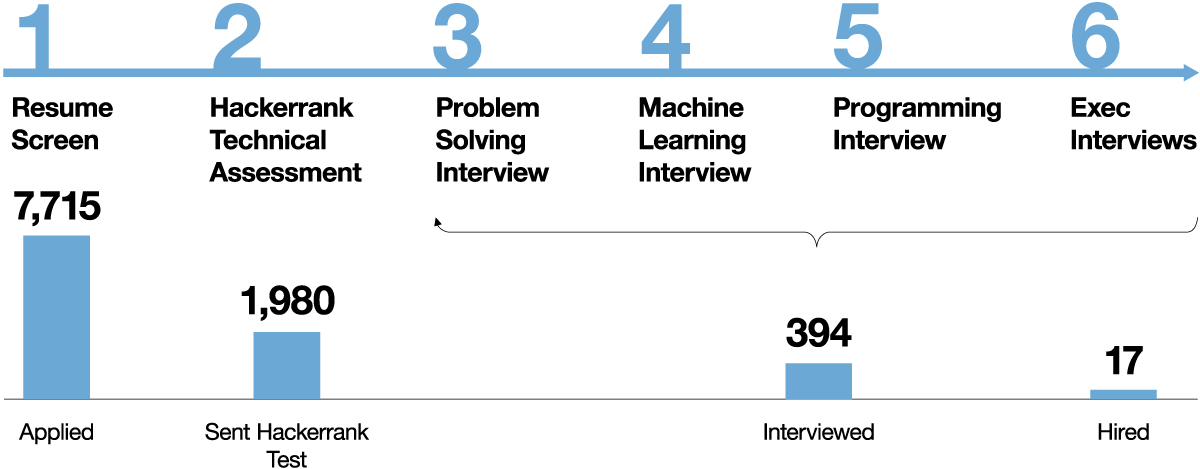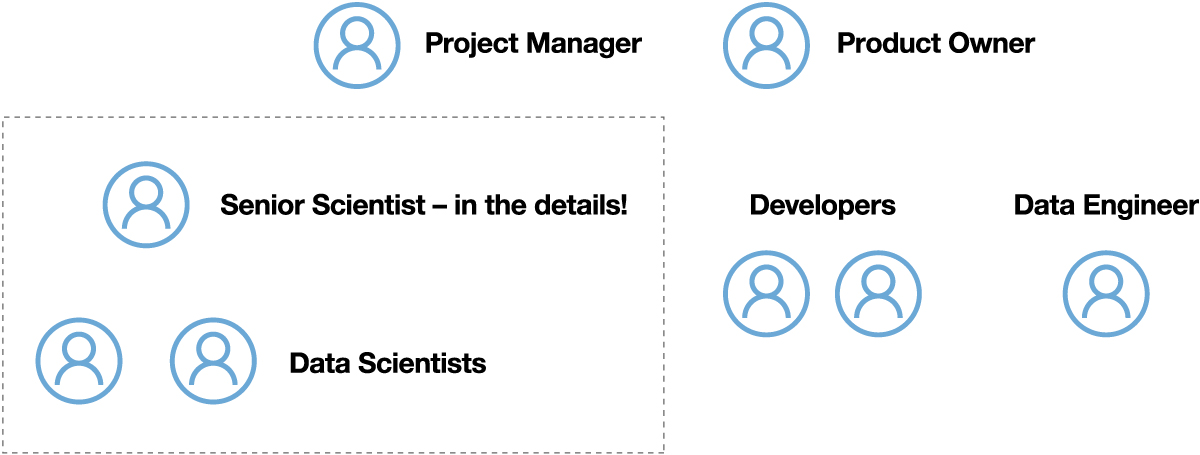- AI Software
- C3 AI Applications
- C3 AI Applications Overview
- C3 AI Anti-Money Laundering
- C3 AI Cash Management
- C3 AI CRM
- C3 AI Decision Advantage
- C3 AI Demand Forecasting
- C3 AI Energy Management
- C3 AI ESG
- C3 AI Intelligence Analysis
- C3 AI Inventory Optimization
- C3 AI Process Optimization
- C3 AI Production Schedule Optimization
- C3 AI Property Appraisal
- C3 AI Readiness
- C3 AI Reliability
- C3 AI Smart Lending
- C3 AI Sourcing Optimization
- C3 AI Supply Network Risk
- C3 AI Turnaround Optimization
- C3 AI Platform
- C3 Generative AI
- Get Started with a C3 AI Pilot
- Industries
- Customers
- Resources
- Generative AI
- Generative AI for Business
- C3 Generative AI: How Is It Unique?
- Reimagining the Enterprise with AI
- What To Consider When Using Generative AI
- Why Generative AI Is ‘Like the Internet Circa 1996’
- Can Generative AI’s Hallucination Problem be Overcome?
- Transforming Healthcare Operations with Generative AI
- Data Avalanche to Strategic Advantage: Generative AI in Supply Chains
- Supply Chains for a Dangerous World: ‘Flexible, Resilient, Powered by AI’
- LLMs Pose Major Security Risks, Serving As ‘Attack Vectors’
- C3 Generative AI: Getting the Most Out of Enterprise Data
- The Key to Generative AI Adoption: ‘Trusted, Reliable, Safe Answers’
- Generative AI in Healthcare: The Opportunity for Medical Device Manufacturers
- Generative AI in Healthcare: The End of Administrative Burdens for Workers
- Generative AI for the Department of Defense: The Power of Instant Insights
- What is Enterprise AI?
- Machine Learning
- Introduction
- What is Machine Learning?
- Tuning a Machine Learning Model
- Evaluating Model Performance
- Runtimes and Compute Requirements
- Selecting the Right AI/ML Problems
- Best Practices in Prototyping
- Best Practices in Ongoing Operations
- Building a Strong Team
- About the Author
- References
- Download eBook
- All Resources
- C3 AI Live
- Publications
- Customer Viewpoints
- Blog
- Glossary
- Developer Portal
- Generative AI
- News
- Company
- Contact Us
- Introduction
- What is Machine Learning?
- Tuning a Machine Learning Model
- Evaluating Model Performance
- Runtimes and Compute Requirements
- Selecting the Right AI/ML Problems
- Best Practices in Prototyping
- Problem Scope and Timeframes
- Cross-Functional Teams
- Getting Started by Visualizing Data
- Common Prototyping Problem – Information Leakage
- Common Prototyping Problem – Bias
- Pressure-Test Model Results by Visualizing Them
- Model the Impact to the Business Process
- Model Interpretability Is Critical to Driving Adoption
- Ensuring Algorithm Robustness
- Planning for Risk Reviews and Audits
- Best Practices in Ongoing Operations
- Building a Strong Team
- About the Author
- References
- Download e-Book
- Machine Learning Glossary
Building a Strong Team
Candidate Screening and Interview Process
It is important to design the interview process carefully in order to build a strong AI/ML team. Given the challenges in finding strong technical talent, we typically recommend that our clients create as wide a funnel as possible and be prepared for a recruiting process that involves screening a large number of candidates to hire just a few individuals.
Our own AI/ML recruiting process at C3 AI has six steps starting with a fast resume screen, followed by an automated technical assessment, and subsequently multiple rounds of interviews. The resume review and the automated technical assessment enable us to screen a large number of candidates quickly.
We give significant thought to the technical assessment and we design it to help us understand a candidate’s fundamental mathematical skills, general familiarity with AI/ML techniques, and coding skills. In 2019, C3 AI received 7,715 applications to our AI/ML team. We screened most of these candidates based on the resume and technical tests, interviewed nearly 400 candidates, and hired 17. Most organizations seeking to build up technical AI/ML talent should expect a similar recruiting funnel. The following figure illustrates the process.

Figure 43 : C3 AI’s AI/ML recruiting funnel for 2019
Team Organization
Organizing data science teams is often a complex endeavor involving a combination of factors. First, data science is a highly specialized field; it involves experienced practitioners with advanced, professional degrees. These individuals often require specialized structures, environments, and professional development opportunities.
Second, in order to capture value from data science, most organizations require data scientists to collaborate effectively and also to collaborate and work with business users, end-users, and other developers and data engineers in the context of specific products and projects.
Given our experience with managing complex, data science-based products and projects, we typically recommend and leverage internally a data science organizational structure that operates across three dimensions.
First, we recommend a core, relatively traditional data science management infrastructure, with individual data scientists reporting to managers, who in turn report to a VP of Data Science. However, one key difference from traditional technical management structures, such as those for software development, is that we generally do not recommend the use of full-time people managers. That is, we typically find more success when technical leaders who are also good managers are asked to manage small pods of data scientists, while at the same time still retaining technical responsibility and technical leadership for several tasks.
Second, in addition to the data science management structure, we recommend a separate structure designed to provide mentorship for data scientists within the organization. Senior scientists are assigned as mentors to junior ones, and with mentors that do not map to the organizational chart.
Third, we recommend a separate organizational chart for project and product teams that are formed around specific initiatives. That is, we formally staff data scientists to work on specific project or product initiatives without regard for the organizational team to which they are assigned. For the duration of the project or assignment, their primary day-to-day reporting structure follows the project or product team, not their assigned organizational structure.
The following figure illustrates the concept.

Figure 44 Organizing successful data science teams
Over the last decade at C3 AI, we have also identified several best practices to organize project teams. Project teams are often cross-functional, requiring data scientists to collaborate with developers and data engineers to configure and develop AI applications or solutions. These cross-functional project teams require a day-to-day management structure.
C3 AI and our clients often find a management structure combining both a project manager and a product manager to be an ideal configuration. In some cases, these roles can be collapsed into a single individual. The project manager focuses on deliverables, timelines, activities, and reporting – keeping the project train on the tracks – while the product manager focuses on the application or the solution being developed. This architecture maximizes function, scalability, and re-use, minimizes technical debt, and is aware of all aspects of maintenance, management, and ongoing operations of the AI/ML algorithms.
We typically recommend assigning a senior data scientist or one of the data science team leaders to oversee – using only part of their time – the AI/ML progress on each project. This senior scientist must spend sufficient time to be in on the details of the work and must be involved in the team’s day-to-day problem solving (Figure 45).
We encourage this senior scientist to advocate actively for the data science perspective on the problem and its solution. This senior scientist reports separately to executive data science leadership both on progress toward resolving the data science problem and any roadblocks observed so that they can request assistance as needed.

Figure 45 : Typical project team structure: a senior scientist is formally assigned part-time to each project team
